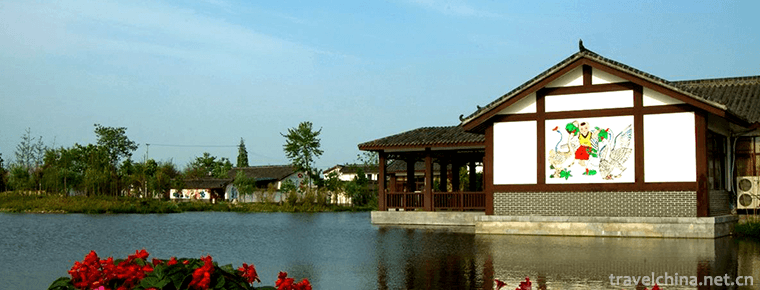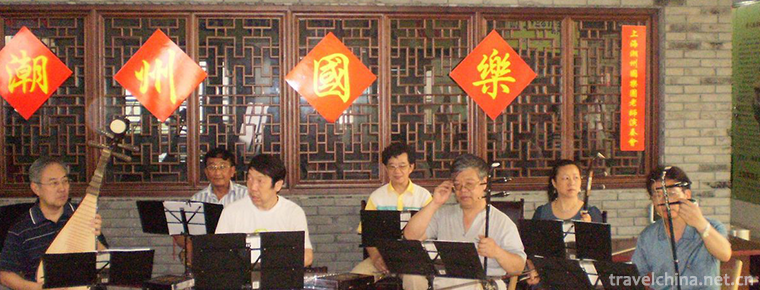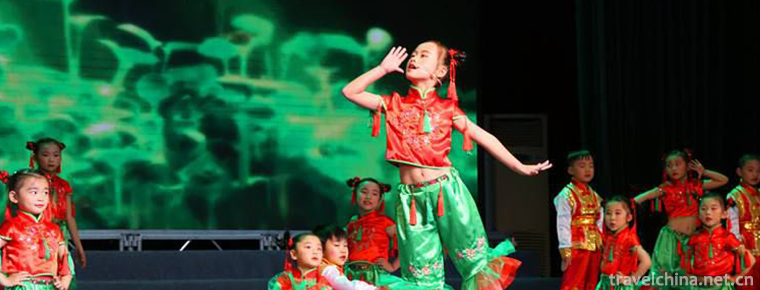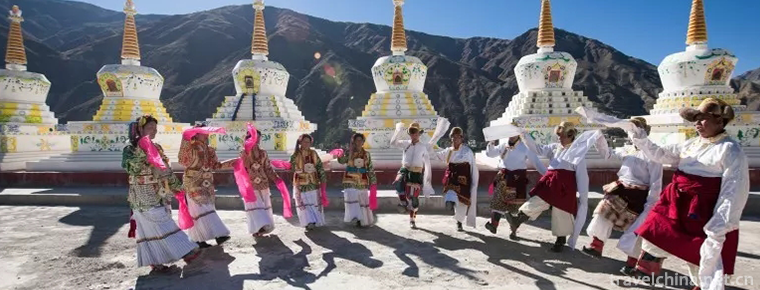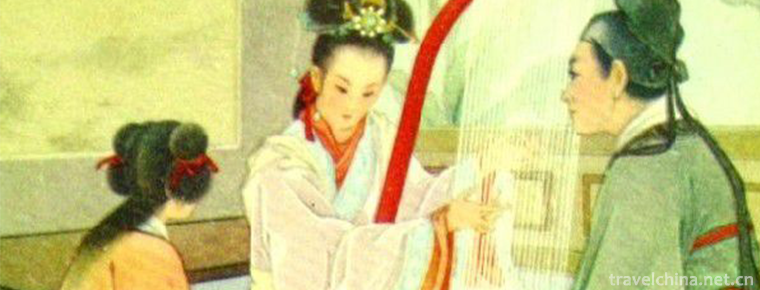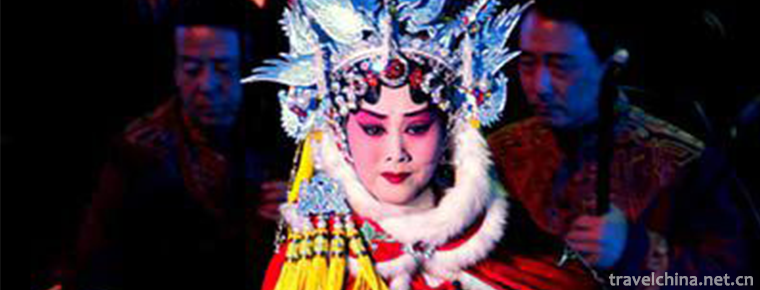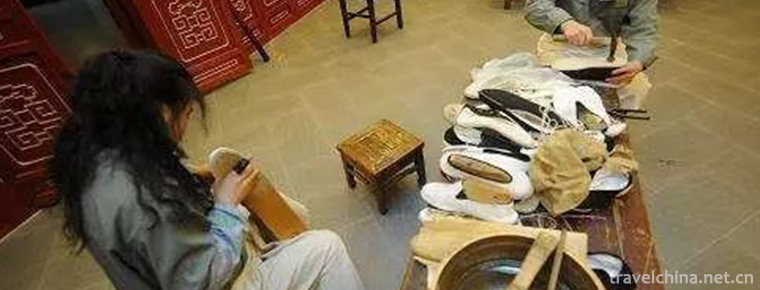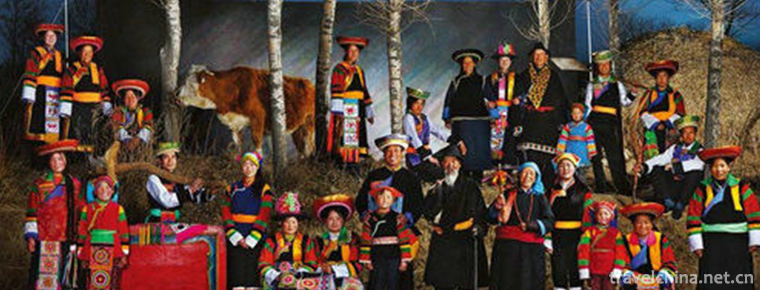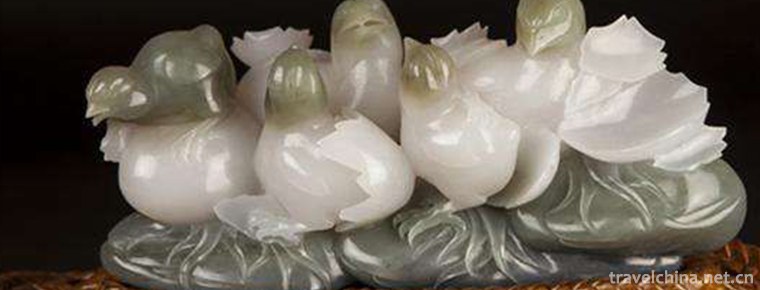Scenic Spots of the Three Gorges of the Yellow River
Scenic Spots of the Three Gorges of the Yellow River
The Three Gorges Scenic Area of the Yellow River, the national AAAA-level tourist attraction, the home of Chinese dinosaurs, painted pottery, flowers and Nuo culture.
Located in the southwest of central Gansu Province and Yongjing County in the north of Linxia Hui Autonomous Prefecture, the Scenic Spot of the Three Gorges of the Yellow River is 44 kilometers away from Lanzhou City, the provincial capital, the west is bordered by Qinghai Province, the northeast is connected with Lanzhou, the Eurasian Continental Bridge and the Lanzhou-Qingdao Line. It is an important passageway of the ancient Silk Road. It is famous for its Liujiaxia Hydropower Station and Binglingsi Grotto The Yellow River flows 107 kilometers through the county in the shape of "S", forming the Three Gorges landscape of Bingling Gorge, Liu Jia Gorge and Yanguo Gorge, and constituting the scenic spot of the Three Gorges of the Yellow River with a total area of 214 square kilometers. Natural scenery is beautiful, scenic spots and historic sites are scattered, ancient and modern cultures reflect each other. It is a tourist attraction with rich connotation and distinctive characteristics.
History of Development
Binglingsi Grottoes, a national key cultural relic protection unit, and three hydropower stations, known as the "Pearl of the Yellow River", are the cradle of China's hydropower industry. In 2004, the Liujiaxia hydropower station was listed as a national industrial tourism demonstration site. Bingling Lake, Taiji Lake and Maogong Lake are the largest artificial freshwater lakes in Northwest China, covering an area of 158 square kilometers, covering the scenic area. The area of Danxia landform, represented by Bingling Stone Forest, is over 30 square kilometers, which is very rare in Northwest China and is praised as "the first wonder in the world" by the ancients. Taiji Island is the largest constructed wetland in the middle and upper reaches of the Yellow River, where more than 26 kinds of rare birds, such as grey crane, white crane and glazed-crowned crane, live. The fossil geological relics of the dinosaur footprint group excavated in the area are large in scale, various in types and complete in remains, which can be regarded as the largest in the world. In 2001, the Ministry of Land and Resources approved the Liujiaxia Dinosaur National Geological Park. There are rich and splendid Yangshao culture, Qijia culture and Xindian culture on both sides of the Yellow River, which are called "the hometown of painted pottery", and the unearthed "King of painted pottery" is now hidden in the Chinese History Museum. Flowers, Nuo Dance, virtuous and filial piety, treasure God and other folk customs and folk arts in the scenic area are colorful, simple and unique, and are listed as "Linxia Flower Collection Area" by the United Nations intangible heritage protection organization.
The Three Gorges Scenic Spot of the Yellow River is located in Yongjing County. It consists of Binglingxia Scenic Spot, Liujiaxia Scenic Spot and Yanguo Gorge Scenic Spot. The scenic spot is rich in human landscape and beautiful in natural scenery.
Major attractions
Bingling Lake of Liujiaxia Reservoir is one of the largest plateau man-made lakes in China. Its surface is wide and its water quality is excellent. The vast lake water, like endless green silk rippling in the mountains, painted full of laughter, white sails drifting fishing songs, the scenery set beautiful south of the Yangtze River and the plateau in one, is a tourist attraction. Bingling Lake is not only the largest and best aquaculture base in Longyuan waters, but also provides an ideal training ground for aquatic sports. Bingling Lake has been designated as the training base of the national canoeing team.
In Bingling Lake scenic spot, many tourist attractions are scattered. The Baita Temple on the North Bank of the lake area is a famous Buddhist holy place for a long time. The White Pagoda with strong Tibetan cultural charm stands in the background of clear water and blue sky, and its graceful demeanor and charm attract people's attention. About 5 kilometers up the Taohe River, Mount Bami is a charming mountain with many mountains, forests, springs and beautiful flowers. Here is the Golden Flower Immortal Goddess Temple and the beautiful legend about Golden Flower Girl, which was built in the Ming Dynasty. Neighbouring Pine Tree Lan, proudly standing Golden Flower Girl "burning stick" into a hundred feet of pine, and winding paths deep, pavilions everywhere in the Baolong Mountain constitute another tourist attraction for change step by step.
The magnificent Liujiaxia Dam is in front of us when we cross the Taohe Estuary. The total installed capacity of Liujiaxia Hydropower Station is 1.225 million kilowatts. It is a mega-kilowatt hydropower station designed, constructed, manufactured, installed and managed by our country. This hydropower station mainly generates electricity and has comprehensive benefits of flood control, irrigation, ice prevention, aquaculture, water transportation and tourism. The dam is 147 meters high, like a forty-story building, standing tall on the Yellow River. The factory building is under the dam and in the mountains. Five generators are singing loudly day and night. The whole factory is like a magical palace in fairy tales. In case of flood discharge from the dam of the power station, standing on the Yellow River Bridge of Liujiaxia, a magnificent artificial waterfall is unfolding in front of us. The water of the Yellow River poured down from the spillway, as if from heaven, and the waves beat against the shore. In May 1995, the Liujiaxia Hydropower Station was named the provincial patriotic education base by the Gansu Provincial Committee of the Communist Party of China; in July 2004, it was listed as the first batch of industrial tourism demonstration sites in China by the National Tourism Administration.
Longhui Mountain is undoubtedly another bright spot in the Three Gorges Scenic Area of the Yellow River. There are mountains like Tao, new pine dots of Cui, pavilions and buildings looming in between. The "Reader's Forest" is the landmark project of "Protecting Mother's River" in the mountains. Surrounding mountains, the Yellow River and Taoshui intersect, hydropower stations and dams depend on each other, Bingling Lake is blue waves. Visitors here, all praise.
Historical allusions
When the Yellow River left Liujiaxia, it turned westward and formed a man-made lake in front of the Yanguoxia Dam. It was named Taiji Lake because of its shape like Taiji. There are 9 islands in Taiji Lake. The reeds on the island are lush. There are 38 species of swans, grey geese and more than 20,000 migratory birds. They are famous bird islands in Gansu Province. This is the largest natural wetland in the upper reaches of the Yellow River. It was listed as the Three Gorges Wetland Nature Reserve in Gansu Province in January 1995. The total area of Taiji Island is 4000 mu, and there are thousands of mu of reeds on the island. Taiji Island is a beautiful picture with clear water like a mirror, reeds like weaving, lotus leaf fields, jujube forests, ripples of rice, silver carp like jumping waves and red gulls.
Luojiadong, a famous Buddhist temple, is located on the South Bank of the Yellow River and is excavated on the cliff. The cliffs of the Buddha Grottoes are all hanging eaves and flying rafters. They are very spectacular. It is said that Nepalese princes came to China in the early Ming Dynasty to practice and become Buddhas. Ganggou Temple on the southwest Bank of Taijihu Lake has dense forests and magnificent mountains. Every year on April 2 and 3 of the lunar calendar, not only is there a flourishing fragrance, but also a "flower" song, which attracts people from four townships to visit.
Along the Taijihu Lake, another pearl in the upper reaches of the Yellow River, Yanguoxia Hydropower Station, shows its outstanding style. Along with Liujiaxia Hydropower Station, it has become a landmark landscape of modern civilization in the Three Gorges of the Yellow River. Yanguoxia Hydropower Station was built in September 1958, with a total installed capacity of 352,000 kW. The first unit generated electricity in November 1961.
There are rare large-scale dinosaur footprint fossils in the world at Tiger's mouth, which is adjacent to the upstream of Yanguoxia Hydropower Station. These dinosaur footprints were formed in the Jurassic or early Cretaceous period and have a history of more than 170 million years. They are rare in the world, including large scale, many kinds, well preserved, high clarity, strong stereoscopic sense and multi-layered appearance. Some of them are the largest dinosaur footprints found in the world at present. The environmental conditions of dinosaur footprints are quite special, and the morphology, arrangement and combination of dinosaur footprints can truly reflect a considerable part of the physiological characteristics and living habits of dinosaurs. According to the remains of the dinosaur footprints in Liujiaxia, experts believe that the environment at that time should be a beach with some sediment on the surface of the lake. Because it was exposed to the surface, it gradually dehydrated and was in a semi-wet and semi-dry state. When dinosaurs walked, the footprints left behind could be formed. The dinosaurs that left these footprints belonged to giant sauropod dinosaurs, small sauropod dinosaurs and virtual bone dinosaurs.
The fossil characteristics of dinosaur footprints can be divided into three categories. The first kind of footprints are oval with obvious toe marks. The largest group of footprints of this kind was 150 cm long, 120 cm wide, 375 cm wide and 345 cm apart. At that time, it was almost certain to be the largest group of dinosaur footprints found in the world. The second type of footprints is vertebral, 76 x 60 cm in size, semi-circular in forefootprints and 49 x 40 cm in size. The third type of footprints is three-toed, with the longest middle toe, about 25 centimeters long and 6 centimeters wide. The opening angle between the toes is between 30 and 40 degrees. The heels are round, about 10 centimeters in diameter, and the toes are pointed, which may belong to the footprints of carnivorous dinosaurs.
Liujiaxia dinosaur footprint fossils have high scientific research and popular science value, but also very rare and precious natural landscape. In November 2001, it was approved by the Gansu Provincial Government to establish the Provincial Nature Reserve of Cretaceous Dinosaur Footprints Group in Liujiaxia. February 28, 2002 was listed as the second batch of national geological parks. In October 2005, Liujiaxia Dinosaur National Geopark in Gansu Province opened its landmark. The dinosaur footprint fossil group adds infinite charm to the Three Gorges of the Yellow River.
The Three Gorges of the Yellow River has not only infinite scenery, but also rich and colorful cultural relics. With a long history and unique geographical environment, the Three Gorges of the Yellow River has a profound and magnificent cultural heritage. Yangshao culture, Qijia culture and Majiayao culture sites are all over the Yellow River. The ancient city of Han and Tang Dynasty is recorded in the annals of history. The Great Wall, beacon tower and ancient ferry still reflect the waves of the Yellow River. Nuo dance, known as the "living fossil" of drama, is a unique folk song "Huaer" in the western plateau, as well as popular folk art such as Yangko, Xianxiao, and so on. It is a wonderful flower of art. In March 2004, it was listed as a United Nations folk song investigation base. Because of the interaction and integration of agricultural culture, plateau animal husbandry culture and Buddhist culture in the Western Regions, the cultural posture here is more colorful, thus forming a very distinctive local ethnic customs.
The beautiful Three Gorges of the Yellow River has become a unique tourist scenic spot because of its unique charm, rich cultural connotation and unique landscape.






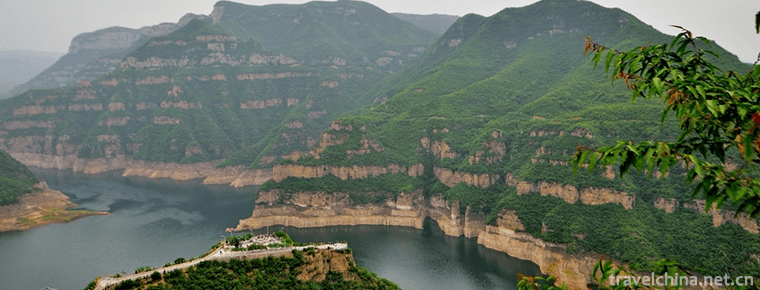
-
Mianzhu New Year Picture Village Scenic Area in China
New Year Picture Village is located in Xiaode Town, South Gate of Mianzhu City, Sichuan Province. It is located between De'a Highway and Chengqing Highway, 73 kilometers away from Chengdu and within o.
Views: 195 Time 2018-12-22 -
Suzhou suburb mudu town
Mudu Ancient Town, nicknamed Duchuan, Xujiang and Xiangxi, is located in the southeast of Jiangsu Province and the west of Suzhou Ancient City. Located in the Taihu Lake Basin.
Views: 136 Time 2019-02-07 -
Chaozhou Music
Chaozhou music is the general name of all kinds of traditional folk instrumental music spread in Chaoshan area of Guangdong Province, referred to as Chaozhou music.
Views: 156 Time 2019-04-16 -
Dang Tu folk songs
Dangtu Folk Song is one of the national intangible cultural heritages of the local traditional music in Ma'anshan City, Anhui Province..
Views: 242 Time 2019-04-25 -
De rong xue qiang
Derong Xueqiang is a folk dance popular in Waka Township, Derong County, Ganzi Prefecture. Its movements are strong, simple and generous, its next steps are strong and its feet are crisp.
Views: 197 Time 2019-04-26 -
Legend of Peacock Flying Southeast
Peacock Flying Southeast is the earliest long narrative poem in the history of ancient Chinese literature, and also the best folk narrative poem in ancient China. Ancient Chinese folklore stories .
Views: 257 Time 2019-05-10 -
Random Bomb Luan tan
Random Bomb, a traditional drama in Taizhou and Pujiang counties of Zhejiang Province, is one of the national intangible cultural heritage..
Views: 200 Time 2019-05-15 -
Manufacturing Skills of Inside Lined 1000 Layer Cloth Shoes
Inline Shoe Shoe Shoe Shoe Shoe Shoe Shop was founded in 1853 in Xianfeng, Qing Dynasty. At first, it was specially designed for the royal family and officials at all levels t.
Views: 302 Time 2019-06-07 -
Qijia Yanxi
"Qijia Yanxi" is a long narrative poem in Tu folk literature. It records the eleventh generation of Qi Tusi Chief Qi Yanxi in the history of Tu people, despite his old age and physical decli.
Views: 186 Time 2019-06-10 -
Jade Carving in Yangzhou
Yangzhou has a long history of jade carving. Jade carving in Yangzhou reached a new peak in the Tang Dynasty, and carving and striping appeared in the Song Dynasty. During the Qianlong reign of the Qi.
Views: 95 Time 2019-07-10 -
An Zhongrong
An Zhongrong (- 942 years), Zi tie Hu, Shuozhou (now Shuozhou, Shanxi). The generals of the Five Dynasties and Ten Kingdoms during the late Tang Dynasty and the Late Jin Dynasty..
Views: 263 Time 2019-09-11 -
Guangan economy
In 2019, the GDP of Guang'an City will reach 125.04 billion yuan, an increase of 7.5% over the previous year (the same below). Among them, the added value of the primary industry was 20.43 billion yuan, an increase of 2.8%; the added value of the secon.
Views: 355 Time 2020-12-19
